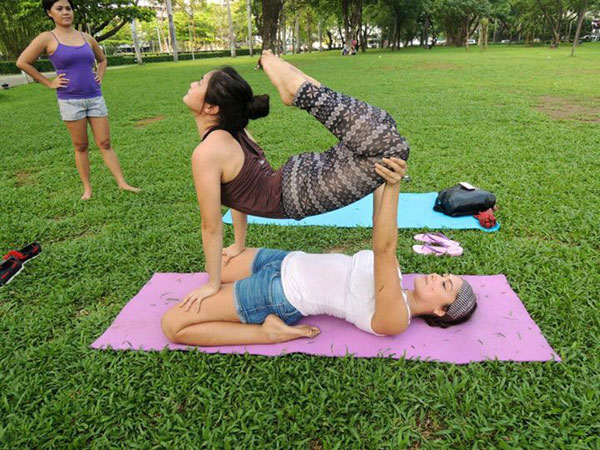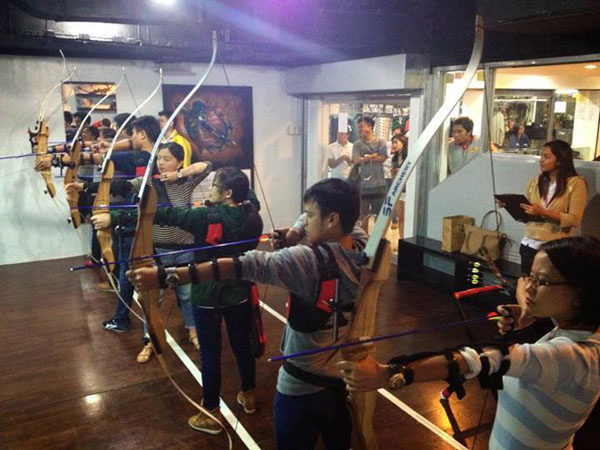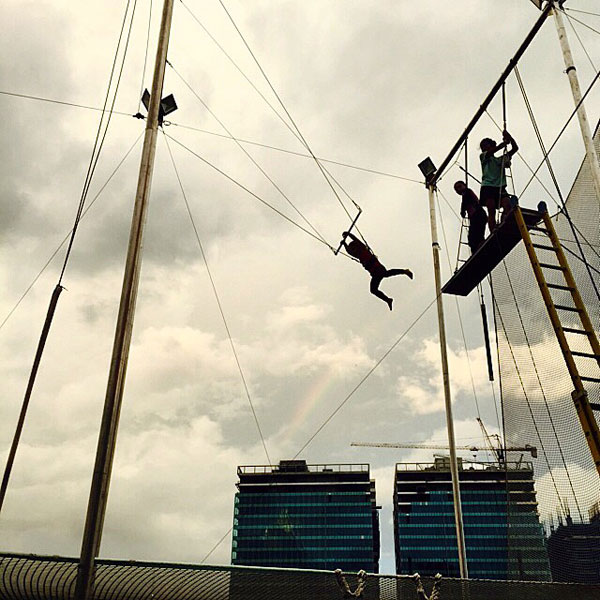Go (coco)nuts! Share this story with your friends.
The term freediving (aka free diving, or free-diving) refers to a diver’s ability to hold breath until re-emergence [from the water] sans the use of a breathing apparatus as a scuba—much like how our fishermen hunted in the old days. Physically, freediving helps you discover the extent of your lung capacity, and how to increase it.
“Discovering the potential of what your body is capable of is very addicting,” says International Association for Development of Apnea (AIDA) instructor, Carlo P. Navarro, who was also an active skindiver and member of the University of the Philippines (UP) Marine Biological Society, an organization with the mission of spreading environmentalism through skindiving. This is how Navarro was introduced to freediving. He continues to share his passion for it as an instructor with Freediving Philippines in Moalboal, Cebu.
“There are other aspects to freediving too apart from doing it competitively, [like] enjoying marine behavior and underwater scenery at shallower depths. Freedive photography also is fun yet challenging as seen on photos taken by breath hold-specific photographers (like Fred Buyle). Most students taking the course don’t intend to go deep, but simply want to enjoy the marine world without heavy scuba equipment,” Navarro shares.
“[One] impression of freediving is that it’s all about pushing limits, [but it’s not really] an adrenaline sport. It’s enjoying the quiet, meditative side of diving. The less you push yourself to go deeper, the better you’ll fare,” Navarro adds.
The move: “Being comfortable in deep water is very important because you spend hours in it,” Navarro says. “Our students first learn proper breathing and relaxation techniques, do’s and don’ts for improved efficiency, as well as possible hazards of the sport. More importantly, we explain the practice of safety. A lot of time will be spent on getting the techniques of equalization [of underwater pressure] right, because if not practiced well, could lead to ear injury,” he adds, and continues, “It’s a familiar concept in scuba diving, and something that needs to be perfected in freediving. Equalizing head down can be tricky.”
Investment: Basic freediving courses range from PHP12,000 up to PHP14,000. Basic freediving equipment can cost as much as a simple scuba setup, which again, will depend on their brand and where they’re made.
Takeaway: “Achieving a new personal best [like running] is usually the first goal of every freediver. There are competitions with big variations on skill levels of participants. Still, many join because they compete with themselves to attain new personal achievements. That said, one must be cautious and prioritize learning how to progress safely and responsibly. Improvements must be step-by-step,” advises Navarro.
Freediving takes a lot of dedication. Through training, you build skills and also adapt your body to handle underwater stress. When you invest a lot of time on something, you work hard to maintain it, which carries over to how you live —healthier.
Tips to observe before taking the plunge:
1. Seek a real expert. “There are a lot of information available on the Internet [including] spectacular videos showing professionals doing advanced techniques, most of which may not be useful yet, especially for beginners. [Some] of these high-level techniques may be unsafe.
2. Dive for yourself. “Don’t compare yourself with other divers because each person is different. It’s useless to focus much on say, fellow divers progressing faster than you are, instead, focus on YOUR own strengths and weaknesses.”
3. Be aware. “Don’t become too obsessed with performance and or depth, even if it [seems] very easy to focus on depth at the start. Listen to your body to know if you’re ready or comfortable enough to go deeper.”
4. It’s a buddy system. NEVER practice freediving alone. “Again, freediving can be dangerous. It is a niche sport that makes it hard to find people to dive with. Make sure to have a competent buddy, or better yet, a coach with you at all times in the pool, or in the ocean. There are groups like MBS, ISDA and SISID in Manila, Dive Ta Bai in Cebu and spearfishing groups in Davao, which you can join. Just like scuba diving, freediving employs a buddy system.”
5. Consult the doc. “Those prone to ear, lung infection, and or asthma attacks may want to get clearance from say, a diving physician. It’s hard to come across one, but if you do find one, or at least a physician who is knowledgeable about diving-related health conditions, you might still want to get his or her opinion before taking the plunge.”
Location: Navarro says freediving can be practiced where the ocean is accessible. “Moalboal in Cebu is getting to be a popular place for freediving with international freedivers training here. It offers conditions freedivers want — deep waters [that are] close to shore,” says Navarro. To get news and updates with regards to freediving course locations and schedules, check carlo.p.navarro (no spaces) on Facebook. Courses in Manila are offered by Freediving Philippines when there are enough inquiries.
READ THE REST:
1. Three is company: AcroYoga

Read how you can become an AcroYogi
2. COOL RUNNINGS: PARKOUR

Read where to enrol in a Parkour class here.
3. FOCUS UNDER PRESSURE: ARCHERY

Read how to learn archery here.
4. CIRCUS ACT: FLYING TRAPEZE

Read about flying trapeze classes here.




Reader Interactions